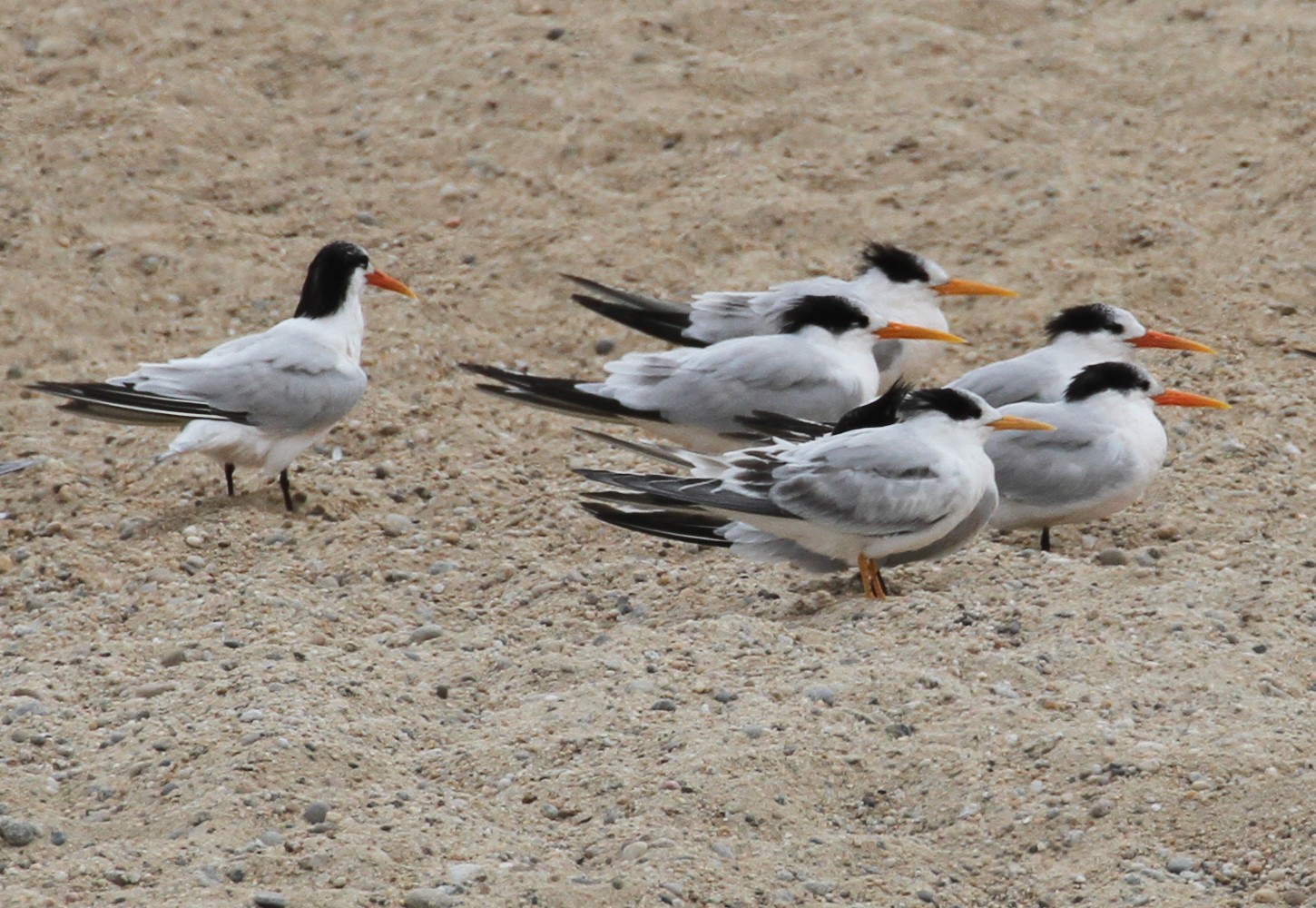Elegant Tern
A species of Crested terns Scientific name : Thalasseus elegans Genus : Crested terns
Elegant Tern, A species of Crested terns
Botanical name: Thalasseus elegans
Genus: Crested terns
Content
Description General Info
Description
The elegant tern (Thalasseus elegans) is a tern in the family Laridae. It breeds on the Pacific coasts of the southern United States and Mexico and winters south to Peru, Ecuador and Chile. This species breeds in very dense colonies on coasts and islands, including Isla Rasa and Montague Island (Mexico), and exceptionally inland on suitable large freshwater lakes close to the coast. It nests in a ground scrape and lays one to two eggs. Unlike some of the smaller white terns, it is not very aggressive toward potential predators, relying on the sheer density of the nests (often only 20–30 cm apart) and nesting close to other more aggressive species such as Heermann's gulls to avoid predation. The elegant tern feeds by plunge-diving for fish, almost invariably from the sea, like most Thalasseus terns. It usually dives directly, and not from the "stepped-hover" favoured by the Arctic tern. The offering of fish by the male to the female is part of the courtship display. This Pacific species has wandered to western Europe as a rare vagrant on a number of occasions, has nested in Spain and has interbred with the Sandwich tern in France; there is also one record from Cape Town, South Africa in January 2006, the first record for Africa. An Elegant Tern was recorded in the British Isles, in Pagham, West Sussex, in June 2017. 
Size
41-43 cm (16-17 in)
Life Expectancy
9 years
Nest Placement
Ground
Clutch Size
1 - 2 eggs
Feeding Habits
Elegant Tern mainly consume small schooling fish, like northern anchovy, captured via plunge-diving. When prey is plentiful, they may feed in large groups. Occasionally, they eat crustaceans. They perform courtship-feeding and can travel up to 15 miles for a single fish, which can be stolen by gulls and jaegers.
Habitat
Elegant Tern are typically found along coastal environments, favoring bays, beaches, and open ocean waters. They prefer nesting on flat, sandy isles with minimal vegetation or on pebbly grounds, such as those found in the Gulf of California. These birds adapt to nesting on sandy dredge spoil as well. Elegant Tern seek food primarily in marine areas but will exploit estuaries when prey is abundant. Away from nesting sites, they are inclined to roost on coastal beaches, mudflats, rocks, and artificial structures like pilings, generally avoiding freshwater locales.
Nest Behavior
Both elegant Tern parents build the nest rim, regularly using nearby materials. Females likely choose nest sites. Nesting includes synchronized egg-laying and dedicated parental care for eggs and chicks.
Nest Characteristics
Elegant Tern nests on flat, pebbly, or sandy ground, often beaches or islands. Their nests are shallow scrapes, occasionally lined with shells/pebbles, surrounded by a rim of debris, averaging 6 inches across.
Dite type
Piscivorous
General Info
Feeding Habits
Bird food type
Sounds
Call
Recording location: Chile
Behavior
The elegant Tern displays complex social and breeding behaviors, forming dense colonies where unpaired individuals may join 'clubs' to find mates. They engage in intricate courtship rituals, both in the air with synchronized flying and calls, and on land with males presenting fish to females. Elegant Tern are believed to be monogamous, sharing nesting duties and continuing to nurture their young in crèches long after fledging. Despite this extended care, elegant Tern can identify and feed their specific offspring. Outside of breeding, elegant Tern are sociable, mingling with other seabirds in communal roosting and foraging sites.
Species Status
Not globally threatened.
